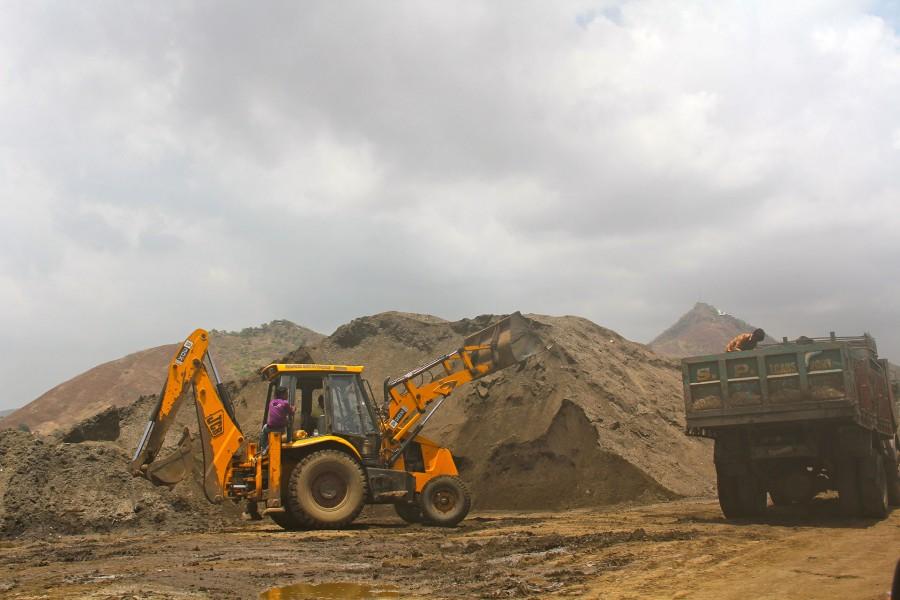India’s Sand Mafia Continues to Grow
India has been pretty busy lately. The swelling country is forecasting an annual 8% growth in construction for the next decade– with Prime Minister Narendra Modi claiming to construct “a new Chicago every year.” Such a large construction boom has resulted from massive overcrowding, but unfortunately presents problems of its own.
One of the primary resources required by this sudden growth in construction is concrete, which requires a lot of sand. According to the country’s Construction Industry Development Council, India uses 500 million tons yearly– most of which is mined illegally. According to policy, all mining of sand must go through India’s Environmental Ministry, which collects a revenue tax and helps regulate the removal of specific amounts of sand. This is rarely followed, however. Shivam Srivastava, an architect, added, “That is why they are mining illegally. There are so many formalities you can’t fulfill easily [to get a mining lease from the government] unless you have the proper connection.” Even in cases where a company goes through the process of obtaining a permit, they often excavate more than their fair share. That’s where the Sand Mafia comes in.
Though there’s an abundance of sand in the large country, all resources are finite, and illegal miners are beginning to take sand from places that severely impact local operations. As the sand often comes from riverbeds or farmland, the consequences can be dire. Sand helps to purify groundwater and prevent riverbed erosion, and without it flooding often follows. Local farmers are the most vocal and ready to speak out; but such speaking out has led to a larger problem. To prevent retaliation, a ‘sand mafia’ of sorts has emerged. Leading an army of desperate workers shielded by an inefficient bureaucracy, the mafia makes a pretty penny by destroying the land. Aunshul Rege, a professor at Temple University, stated that “Given that it is such a low-risk activity for the organized crime group, the amount of violence it can perpetrate is tremendous.”
So far, authorities have had their hands full either supporting the mafia under the table, or protecting those hunted by them for speaking out. It’s a lose-lose situation for the Indian government, mostly because of their inability to organize against this development. Since sand is considered a minor mineral resource, regulation is left up to the Indian states, which are often both corrupt and inefficient. Even when the government manages to catch sand mafia workers, they have no clue who their higher ups are and offer very little in the way of finding said ringleaders. Most of the criminal activity occurs in rural areas, far outside the police’s reach, further complicating the issue as conditions worsen. Thankfully, there are some exceptions. Last year India found and shut down about $4.5 million worth of illegal mining. Although it’s but a fraction of the total amount of illegal mining, the number is expected to grow in the coming years.
There is no one simple solution to the problem, unfortunately. The Indian government continues to try and “clean up” industrial processes that damage the environment, but such efforts are littered with obstacles as a disorganized system fails to enforce any actual rules. The National Green Tribunal, a branch of India’s parliament, deals specifically with environmental cases brought before the court. As with all other branches of India’s government, however, it is overburdened to the point of near uselessness. It’s been over 2 years since the court agreed to hear a case on sand mining, but it has yet to reach it. Such delays compound the issue and allow it to fester. Only time will tell what will become of India’s “red gold.”
Rege, Aunshul. “Not Biting the Dust: Using a Tripartite Model of Organized Crime to Examine India’s Sand Mafia.” Taylor & Francis Online. Informa Plc, 28 Aug. 2015. Web. 17 Nov. 2015.
“Construction Market in India.” The Big 5 Construct India. The Big 5 Construct India, n.d. Web. 17 Nov. 2015.

Hi! You must be really bored if you're reading this, but here we go. My name is Sebastian Lloret and I'm a Senior at Air Academy this year. I speak English,...













